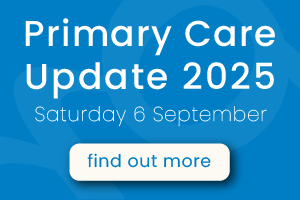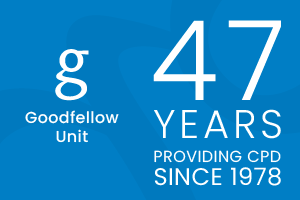
Dulaglutide is one of three glucagon-like peptide-1 receptor agonists (GLP1RAs) available in New Zealand. Currently, it is the only fully funded GLP1RA for the treatment of type 2 diabetes (for patients meeting special authority criteria, as detailed at bottom of page).
This MedCase considers the place of dulaglutide (brand name: Trulicity) alongside other therapies.
Mrs B is a 63-year-old Māori woman with type 2 diabetes and an HbA1c of 65 mmol/mol despite treatment with vildagliptin plus metformin (Galvumet) and insulin. She works at a local supermarket part-time and, with her daughter, cares for her four primary-school-aged mokopuna. She tells you she is afraid of the long-term consequences of diabetes, but finds making sustainable changes to her diet and lifestyle difficult. She is 172cm tall and weighs 88kg (BMI 29.75).
Mrs B has a history of transient ischaemic attack (TIA), hypertension and hypercholesterolaemia. She currently takes:
- Vildagliptin 50mg + metformin 1000g (Galvumet) twice daily
- Insulin glargine (Lantus) 30 units at bedtime
- Clopidogrel 75mg daily
- Perindopril 8mg daily
- Atorvastatin 40mg daily
How can she improve her diabetes control?
What is dulaglutide?
GLP1 is an incretin hormone that promotes insulin secretion after oral glucose intake. Its activity is usually blunted or inactivated in type 2 diabetes. GLP1RAs work in several ways:1
- Reducing blood glucose, via:
- Stimulating insulin secretion by pancreatic beta cells. This action is glucose-dependent and is thus associated with a low risk of hypoglycaemia.
- Inhibiting inappropriate post-meal glucagon release from the pancreatic alpha cells.
- Delaying gastric emptying.
- Increasing satiety via direct action at the hypothalamus.
Clinically, dulaglutide and other GLP1RAs provide meaningful reductions in HbA1c plus other beneficial effects independent of improved glycaemic control, including:
- Decreased HbA1c of up 20 mmol/mol (depending on the start point);
- No risk of hypoglycaemia (unless used with insulin and/or sulfonylureas);
- 2-5mmHg reduction in systolic blood pressure;
- Weight loss of 2-5kg; expect greater weight loss with GLP1RA than with SGLT2 inhibitors such as empagliflozin (Jardiance);
- Reduced triglycerides and LDLc and increased HDLc;
- Reduced cardiovascular morbidity and mortality (12% reduction in non-fatal myocardial infarction, non-fatal stroke or death from cardiovascular causes in the REWIND trial);
- Reduced all-cause mortality.1,2
Risks associated with dulaglutide
Dulaglutide should not be used in patients with type 1 diabetes or those with stage 5 CKD (eGFR <15 mL/min/1.73m2).3,4 It is not recommended in patients aged under 18 years, pregnant or breastfeeding patients, or those with severe gastrointestinal disease, medullary thyroid carcinoma or history of MEN2 syndrome.3 GLP1RAs are not associated with pancreatitis but may cause elevated amylase and lipase levels; consider avoiding in patients with a history of pancreatitis.
Adverse effects are nausea, anorexia, diarrhoea & injection site reactions.
Gastrointestinal symptoms are the most common adverse effects, reported in up to 1/3 of patients. They are typically transient and resolve after 3-4 weeks of treatment. Injection site reactions may also occur; educate patients about using different injection sites each week.4
When to consider GLP1RA treatment
GLP1RAs have been available internationally since 2005 and are now recommended for use in New Zealand when escalation of treatment for type 2 diabetes is required after metformin and lifestyle management, and can be safely used with all other glucose lowering therapies except vildagliptin.
Dulaglutide is fully funded for patients meeting special authority criteria (see below). Note that the PHARMAC ethnicity criteria aim to reduce barriers to access; they do not reflect superior efficacy among Māori or Pacific peoples.
The NZ guidelines also recommend offering GLP1RAs to all patients with HbA1c levels above target, especially when GLP1RA use would provide additional reductions in cardiovascular risk and/or permit reduction or cessation of other therapies that contribute to weight gain or hypoglycaemia.
Is dulaglutide suitable for Mrs B?
Mrs B is an ideal candidate for dulaglutide. With an HbA1c of 65 mmol/mol and using only 30 units per day of Lantus, there is a real chance that dulaglutide treatment may enable her to stop insulin, with the likely associated benefits of weight loss and reduced risk of hypoglycaemia and further cardiovascular events.
Where does dulaglutide fit alongside other non-insulin medications?
GLP1RAs and SGLT2is are recommended for escalation of therapy, after metformin and lifestyle management, for the following patients with type 2 diabetes (see the treatment algorithm in the NZ management algorithm for type 2 diabetes):
- Patients not meeting glycaemic targets (HbA1c >64 mmol/mol).
- Patients with the following conditions, regardless of glycaemic control/HbA1c:
- 5-year CVD risk of 15% or more
- existing CVD
- diabetic renal disease (urinary ACR > 3 mg/mmol and/or eGFR <60 mL/min).
Choosing between a GLP1RA and SGLT2 inhibitor can be a difficult decision as both therapies confer rapid, meaningful HbA1c reductions, weight and risk of cardiovascular disease.
GP1RAs likely lead to greater reductions in HbA1c and weight than SGLT2is, but the choice requires consideration of patient comorbidities, preferences and the risk of adverse effects.
Some useful points of distinction are:
| GLP1RA likely preferred | SGLT2i likely preferred | |
|---|---|---|
| Cerebrovascular disease predominates | √ | |
| Heart failure or renal disease predominates | √ | |
| Overweight with no heart failure or renal disease | √ | |
| Significant GI disease and/or high risk of GI adverse effects with GLP1RA | √ | |
| High risk of diabetic ketoacidosis (e.g. on keto diet) | √ | |
| High risk of recurrent genitourinary infections | √ | |
| eGFR 15-30 mL/min | √ | * |
| Patient preference for mode of administration | Weekly subcutaneous injection preferred | Daily tablet preferred |
* empagliflozin requires eGFR >30 mL/min; dulaglutide requires eGFR >15 mL/min.
Dual GLP1RA and SGLT2i therapy is not currently funded, but is used routinely internationally and should be considered if HbA1c remains above target. Dulaglutide is currently the more expensive to self-fund.
You discuss dulaglutide with Mrs B, explaining that it is a once-weekly subcutaneous injection that can reduce her HbA1c along with weight, and will also help prevent problems related to cardiovascular disease.
She is pleased to hear that she is eligible for fully funded treatment and that she may be able to reduce and possibly stop insulin.
You explain she is likely to experience some nausea initially but this should pass after 3-4 weeks, and advise her about small, frequent meals. Mrs B is keen to start.
How to start dulaglutide
Consider the following steps when initiating dulaglutide treatment:
1. Before prescribing, discuss potential side effects and develop a sick day management plan. Advise that nausea is likely but typically passes after 3-4 weeks. Suggestions to reduce the risk of nausea include: have small, frequent meals; avoid eating 1-2 hours before bedtime; reduce alcohol intake; and avoid spicy foods.
2. Is the patient already taking metformin and/or vildagliptin?
- DPP4 inhibitors such as vildagliptin must be stopped when starting a GLP1RA.
- Metformin should be continued.
3. Is the patient already taking insulin or a sulfonylurea?
- GLP1RAs do not cause hypoglycaemia directly but can rapidly reduce HbA1c with associated hypoglycaemia risk for patients taking concomitant insulin and sulfonylureas and tight glycaemic control. Ideally, adjust insulin dose based on blood glucose levels.
- Patients with high HbA1c (i.e. over 70 mmol/mol) may not require an initial reduction in their insulin dose if they monitor blood glucose regularly. For other patients, reduce the daily insulin dose by 20% and the sulfonylurea dose by 50% when starting dulaglutide.
4. What is the time frame for review?
- Patients not taking concomitant insulin or sulfonylureas can be started on dulaglutide and reviewed in 3 months with an HbA1c prior.
- Patients on concomitant insulin or sulfonylureas should adjust their doses of these agents based on blood glucose levels with 2-weekly review.
You talk with Mrs B about the potential for rapid blood-glucose-lowering with dulaglutide and suggest that, based on her recent HbA1c of 65 mmol/mol, she reduce her daily insulin dose to 20 units. You also ask her to stop vildagliptin, but continue taking metformin.
Mrs B will monitor her blood glucose before breakfast and before dinner for 3 days before she sees you again in 2 weeks.
Next, you measure Mrs B’s blood pressure; it is 128/88 mmHg. You suggest she continue taking perindopril but monitor for any dizzy or light-headed episodes.
You review the need to choose different subcutaneous injection sites in the abdomen, upper arm or thigh each week. Mrs B enters a reminder into her phone to inject dulaglutide every Tuesday.
She has no further questions so you make another appointment in 2 weeks’ time and send a prescription to the pharmacy under special authority for dulaglutide 1.5mg per week.
Over time
Two weeks later, Mrs B is finding dulaglutide easy to manage. She has not missed a dose. She has had some mild but manageable nausea.
You review her home blood glucose measurements. While she has not noticed any hypoglycaemia symptoms, there have been some low early morning measurements of 3.5 mmol/L. You suggest Mrs B stops her insulin altogether.
At the next review 10 weeks later (12 weeks after starting dulaglutide), Mrs B’s HbA1c has reduced to 53 mmol/mol. She has had no symptoms of dizziness or light-headedness and her blood pressure is 122/80 mmHg.
You agree to continue with the current regimen of dulaglutide 1.5mg per week alongside metformin, perindopril and her other medications. She is happy to be off insulin and has noticed a weight loss of 2 kilograms.
You congratulate her and plan to see her in another three months.
Practice points
- Dulaglutide (Trulicity) is a weekly subcutaneous GLP1RA that is highly effective for reducing HbA1c with additional weight loss and cardiorenal protection benefits.
- Therapy with dulaglutide (or another GLP1RA or SGLT2i) may allow many patients to reach and maintain target HbA1c without insulin and/or sulfonylureas (and the associated hypoglycaemia risk).
- Choosing between a GLP1RA or SGLT2i requires consideration of individual patient comorbidities, preferences, and financial capacity (if they don’t meet funding criteria).
- GLP1RAs may elicit greater weight reduction and they are recommended over SLGT2 inhibitors when cerebrovascular disease (rather than heart failure or renal disease) predominates, but can be used in combination with SGLT2is to meet HbA1c targets.
- Stop DPP4 inhibitors, and consider reducing insulin and sulfonylurea doses when starting dulaglutide.
- Initial nausea usually settles after 3-4 weeks.
This MedCase was written in 2021 by Dr Vicki Mount, MBChB FRNZGP DipPaeds MPH, with expert review by Dr Ryan Paul (BHB, MBChB, FRACP, PhD)
| Special Authority criteria for dulaglutide as at July 20215 |
|---|
|
Special authority criteria for fully funded dulaglutide include all of the following: 1. Patient has type 2 diabetes; and 2. Any of the following: 2.1 Patient is Māori or any Pacific ethnicity; or 2.2 Patient has pre-existing cardiovascular disease or risk equivalent*; or 2.3 Patient has an absolute 5-year cardiovascular disease risk of 15% or greater according to a validated cardiovascular risk assessment calculator; or 2.4 Patient has a high lifetime cardiovascular risk due to being diagnosed with type 2 diabetes during childhood or as a young adult; or 2.5 Patient has diabetic kidney disease**; and 3. Target HbA1c (of 53 mmol/mol or less) has not been achieved despite the regular use of at least one blood-glucose lowering agent (e.g. metformin, vildagliptin, or insulin) for at least 3 months; and 4. Treatment will not be used in combination with a funded SGLT-2 inhibitor. Criteria 2.1 – 2.5 describe patients at high risk of cardiovascular or renal complications of diabetes * Defined as: prior cardiovascular disease event (i.e. angina, myocardial infarction, percutaneous coronary intervention, coronary artery bypass grafting, transient ischaemic attack, ischaemic stroke, peripheral vascular disease), congestive heart failure or familial hypercholesterolaemia. ** Defined as: persistent albuminuria (albumin:creatinine ratio greater than or equal to 3 mg/mmol, in at least two out of three samples over a 3-6 month period) and/or eGFR less than 60 mL/min/1.73m2 in the presence of diabetes, without alternative cause. |
Supported with an unrestricted educational grant from
Recognition of Learning Activities
Don't forget to log your time with The Royal New Zealand College of General Practitioners portal for recognition of learning activities.



